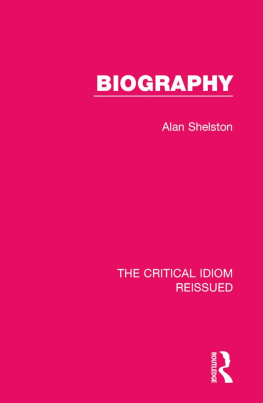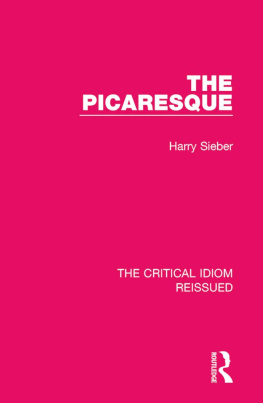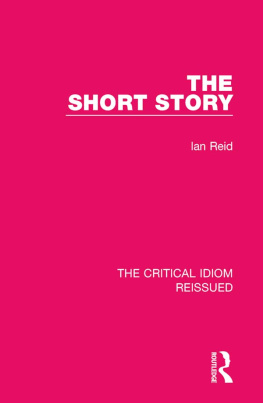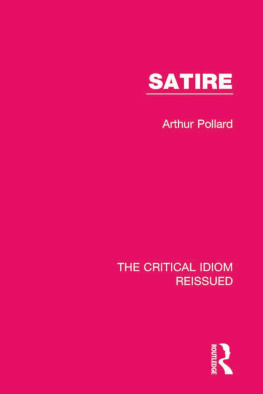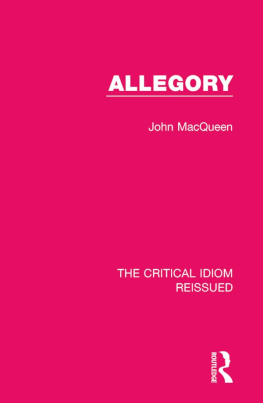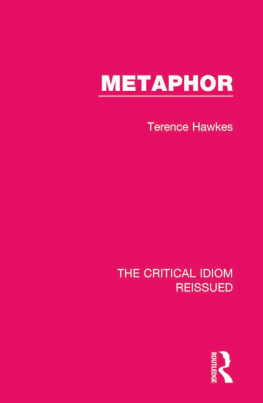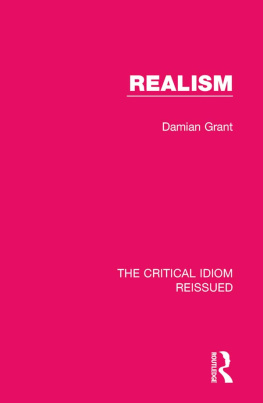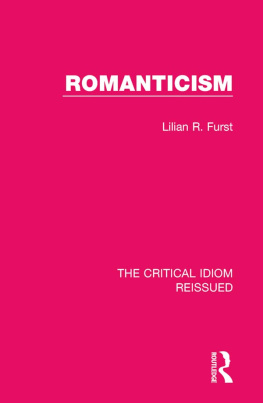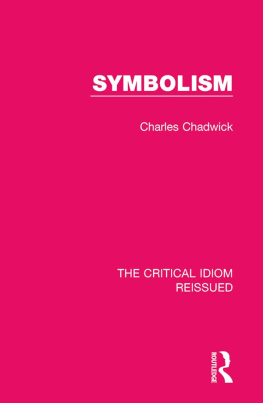Table of Contents
Guide
Print Page Numbers
THE CRITICAL IDIOM REISSUED
Volume 32
BIOGRAPHY
BIOGRAPHY
ALAN SHELSTON
First published in 1977 by Methuen & Co Ltd
This edition first published in 2018
by Routledge
2 Park Square, Milton Park, Abingdon, Oxon OX14 4RN
and by Routledge
711 Third Avenue, New York, NY 10017
Routledge is an imprint of the Taylor & Francis Group, an informa business
1977 Alan Shelston
All rights reserved. No part of this book may be reprinted or reproduced or utilised in any form or by any electronic, mechanical, or other means, now known or hereafter invented, including photocopying and recording, or in any information storage or retrieval system, without permission in writing from the publishers.
Trademark notice: Product or corporate names may be trademarks or registered trademarks, and are used only for identification and explanation without intent to infringe.
British Library Cataloguing in Publication Data
A catalogue record for this book is available from the British Library
ISBN: 978-1-138-21971-7 (Set)
ISBN: 978-1-315-26975-7 (Set) (ebk)
ISBN: 978-1-138-28393-0 (Volume 32) (hbk)
ISBN: 978-1-315-11533-7 (Volume 32) (ebk)
Publishers Note
The publisher has gone to great lengths to ensure the quality of this reprint but points out that some imperfections in the original copies may be apparent.
Disclaimer
The publisher has made every effort to trace copyright holders and would welcome correspondence from those they have been unable to trace.
Biography
Alan Shelston
First published 1977
by Methuen & Co Ltd
11 New Fetter Lane London EC4P 4EE
1977 Alan Shelston
ISBN 416 83680 1 (Hardback)
ISBN 416 83690 9 (Paperback)
This title is available in both hardback and paperback editions. The paperback edition is sold subject to the condition that it shall not, by way of trade or otherwise, be lent, resold, hired out, or otherwise circulated without the publishers prior consent in any form of binding or cover other than that in which it is published and without a similar condition including this condition being imposed on the subsequent purchaser.
Distributed in the USA by
HARPER & ROW PUBLISHERS INC
BARNES & NOBLE IMPORT DIVISION
Contents
The volumes composing the Critical Idiom deal with a wide variety of key terms in our critical vocabulary. The purpose of the series differs from that served by the standard glossaries of literary terms. Many terms are adequately defined for the needs of students by the brief entries in these glossaries, and such terms do not call for attention in the present series. But there are other terms which cannot be made familiar by means of compact definitions. Students need to grow accustomed to them through simple and straightforward but reasonably full discussions. The purpose of this series is to provide such discussions.
Many critics have borrowed methods and criteria from currently influential bodies of knowledge or belief that have developed without particular reference to literature. In our own century, some of them have drawn on art-history, psychology, or sociology. Others, strong in a comprehensive faith, have looked at literature from a Marxist or a Christian or some other sharply defined point of view. The result has been the importation into literary criticism of terms from the vocabularies of these sciences and creeds. Discussions of such bodies of knowledge and belief in their bearing upon literature and literary criticism form a natural extension of the initial aim of the Critical Idiom.
Because of their diversity of subject-matter, the studies in the series vary considerably in structure. But all the authors have tried to give as full illustrative quotation as possible, to make reference whenever appropriate to more than one literature, and to write in such a way as to guide readers towards the short bibliographies in which they have made suggestions for further reading.
John D. Jump
University of Manchester
Where possible I have given page references to readily available editions of major works. Where these do not exist I have tried to give references of a kind which will enable the reader to trace the passages concerned with the minimum of inconvenience.
I would like to acknowledge the help given to me by the late Professor John D. Jump in the preparation of this volume: the interest which he showed went far beyond the call of a General Editors duty.
A.J.S.
Writing, in his Prefaces, of the origin of one of his stories, Henry James makes what for him is the crucial distinction between the novelist or dramatist as he calls himself on this occasion and the biographer:
The subject of The Coxon Fund, published in The Yellow Book in 1894, had long been with me, but was, beyond doubt, to have found its interest clinched by my perusal, shortly before that date, of Mr J. Dyke Campbells admirable monograph on S. T. Coleridge. The wondrous figure of that genius had long haunted me, and circumstances into which I neednt here enter had within a few years contributed much to making it vivid. Yet its none the less true that the Frank Saltram of The Coxon Fund pretends to be of his great suggester no more than a dim reflection and above all a free arrangement. More interesting still than the man for the dramatist at any rate is the S. T. Coleridge type; so what I was to do was merely to recognise the type, to borrow it, to re-embody and freshly place it; an ideal under the law of which I could cultivate a free hand.
(The Art of the Novel, ed. R. P. Blackmur, New York, rpt. 1962, pp. 22930)
Here James, at the end of his career, reverts to that emphasis on the freedom of the novelist which he insists on in all his theoretical writings: the biographer, by implication, is not free, but inhibited by the demands of accuracy and attention to detail which, paradoxically, militate against the achievement of a higher form of truth.
D. H. Lawrence, in his essay, Why the Novel Matters, makes a similar claim for his chosen literary form:

